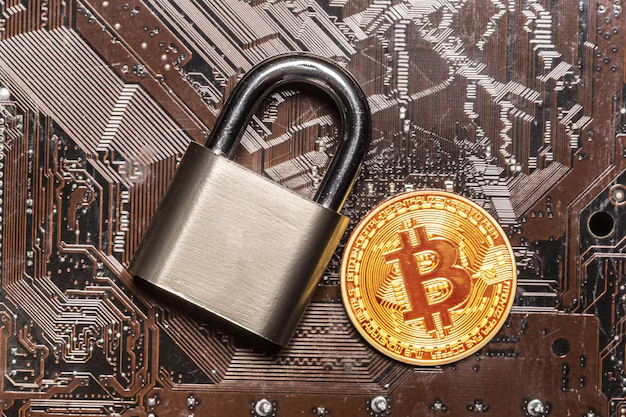Blockchain technology has become the cornerstone of decentralized systems. It has disrupted industries by enabling secure, transparent, and tamper-proof transactions without the need for intermediaries. The rise of blockchain-based applications, especially in finance (cryptocurrencies), healthcare, supply chain management, and governance, has demonstrated its potential to revolutionize various sectors.
However, as with any transformative technology, blockchain faces significant challenges, particularly regarding security. Blockchain’s decentralized nature offers inherent security advantages, but it also introduces vulnerabilities that must be addressed to safeguard the future of decentralized systems.
This article explores the critical aspects of blockchain security, the threats it faces, the technologies that enhance its security, and the steps that can be taken to safeguard decentralized systems from attacks and failures.
Key Takeaways
- Blockchain security is essential for maintaining the integrity and trust of decentralized systems.
- Blockchain faces various security threats, including 51% attacks, Sybil attacks, smart contract vulnerabilities, and private key risks.
- Blockchain security can be enhanced through improved consensus mechanisms, multi-signature authentication, formal verification of smart contracts, and quantum-resistant cryptography.
- The development of decentralized oracles and Layer 2 scaling solutions can further enhance blockchain security and scalability.
- Continuous research and development are required to keep blockchain systems secure as new threats emerge.
The Basics of Blockchain Technology

Before delving into security concerns, it’s essential to understand the fundamentals of blockchain. Blockchain is a distributed ledger technology (DLT) that records transactions across many computers in a way that ensures the data is immutable and transparent. Here are its core components:
- Decentralization: Unlike centralized systems, where a single entity controls the database, blockchain distributes the data across a network of nodes, each having a copy of the ledger.
- Consensus Mechanism: This is the process through which all participants (nodes) in the network agree on the validity of transactions. The most common consensus mechanisms are Proof of Work (PoW) and Proof of Stake (PoS).
- Cryptography: Blockchain uses cryptographic techniques to secure transactions. Public key cryptography is typically used to sign transactions, while hash functions help maintain data integrity.
- Immutability: Once a block is added to the blockchain, it cannot be changed, ensuring data integrity. This is achieved through a combination of cryptography and consensus mechanisms.
Despite its promise, blockchain technology faces several security challenges, especially as the adoption rate increases. Let’s explore these challenges in detail.
Key Security Challenges in Blockchain
51% Attack
One of the most well-known security threats to blockchain networks, especially those that rely on Proof of Work (PoW) consensus, is a 51% attack. In this scenario, a group of miners or nodes controlling more than 50% of the network’s computational power can manipulate the blockchain. They could reverse transactions, double-spend coins, or halt new transactions from being confirmed.
Although 51% attacks are relatively rare in large networks like Bitcoin, smaller blockchains are more vulnerable to such attacks, which can undermine confidence in the entire system.
Sybil Attacks
A Sybil attack occurs when a malicious actor creates multiple fake identities (or nodes) to gain control over a blockchain network. These fake nodes can disrupt the network’s consensus mechanism and cause problems like transaction manipulation or denial of service.
Sybil attacks exploit the decentralized nature of blockchain systems, which do not always have mechanisms in place to distinguish between legitimate and fake identities.
Smart Contract Vulnerabilities
Smart contracts are self-executing contracts with the terms of the agreement directly written into code. While they automate and enforce contractual agreements without intermediaries, they also introduce security vulnerabilities. Bugs or flaws in the contract code could be exploited by hackers to drain funds or disrupt operations.
The infamous DAO attack of 2016, which resulted in the theft of millions of dollars worth of Ethereum, is a prime example of how smart contract vulnerabilities can have significant financial consequences.
Private Key Security
The security of blockchain transactions depends heavily on cryptographic keys, particularly private keys. Losing a private key means losing access to the associated funds or data. If a private key is stolen or compromised, the attacker gains full control over the funds or assets.
A key vulnerability here is human error. Users may neglect the safe storage of their keys, leaving them susceptible to phishing attacks, malware, or social engineering schemes.
Smart Contract Oracles and External Data Vulnerabilities
Smart contracts often rely on oracles to fetch real-world data (e.g., stock prices, weather conditions) to execute their logic. However, oracles themselves can be compromised, introducing vulnerabilities into the blockchain. If an oracle provides inaccurate or manipulated data, it can cause significant errors in smart contract execution.
Network Layer Vulnerabilities
Blockchain networks communicate through a peer-to-peer (P2P) protocol, which can be susceptible to attacks like Man-in-the-Middle (MITM) attacks or Denial of Service (DoS) attacks. MITM attacks can allow an attacker to intercept, alter, or inject malicious data into transactions, while DoS attacks can overwhelm the network, causing disruptions in the blockchain’s functionality.
Quantum Computing Threats
The advent of quantum computing poses a future threat to blockchain security. Quantum computers have the potential to break current cryptographic algorithms, including those used in blockchain. This could lead to the exposure of private keys and the potential manipulation of blockchain data. While this is still a theoretical concern, quantum computing could undermine blockchain’s security in the long term.
Blockchain Security Measures

To address the security concerns outlined above, blockchain developers and researchers have been working on various solutions and improvements. Let’s examine some of these security measures.
Consensus Mechanism Improvements
One of the most significant ways to enhance blockchain security is through improvements in consensus mechanisms. The most widely used mechanism, Proof of Work (PoW), requires miners to solve complex mathematical puzzles to validate transactions. However, PoW is energy-intensive and vulnerable to 51% attacks.
In contrast, Proof of Stake (PoS) requires validators to lock up a certain amount of cryptocurrency as collateral to participate in the validation process. This mechanism is more energy-efficient and less susceptible to 51% attacks, making it an attractive alternative for many blockchain networks.
Multi-Signature Authentication
To improve the security of private keys, blockchain applications can use multi-signature (multi-sig) wallets. Multi-sig wallets require multiple private keys to authorize a transaction, reducing the risk of theft or loss of funds. For example, if a wallet has a 2-of-3 multi-sig configuration, at least two out of three private keys must be used to authorize a transaction.
This adds an extra layer of security and makes it harder for attackers to gain control of the funds.
Formal Verification of Smart Contracts
The vulnerabilities associated with smart contracts can be minimized through formal verification. This process involves mathematically proving that the code behaves as expected under all possible conditions. By verifying smart contracts before deployment, developers can eliminate bugs or vulnerabilities that could lead to exploitation.
Several tools and platforms now offer smart contract auditing services, which are designed to detect security flaws in the code.
Quantum-Resistant Cryptography
With quantum computing on the horizon, it’s essential to implement quantum-resistant cryptography in blockchain systems. Post-quantum cryptography (PQC) algorithms are being developed to withstand the computational power of quantum computers. These algorithms will ensure that blockchain systems remain secure in the age of quantum computing.
Some blockchain projects have already started integrating quantum-resistant algorithms to future-proof their systems.
Improved Key Management Systems
Blockchain users must adopt better key management practices to protect private keys. Hardware wallets, cold storage, and key recovery services are popular options for safeguarding private keys. Furthermore, it’s crucial to educate users on the importance of securing their keys and using strong passphrases or multi-factor authentication to protect them.
Layer 2 Scaling Solutions
Blockchain networks can enhance security and scalability by integrating Layer 2 solutions such as the Lightning Network for Bitcoin or Plasma for Ethereum. These solutions enable faster transactions and reduce the strain on the main blockchain by conducting transactions off-chain. This can improve the overall security of the network by reducing congestion and potential attack vectors.
Decentralized Oracles
To mitigate the risks associated with centralized oracles, blockchain networks can leverage decentralized oracles. These oracles rely on multiple independent data sources to provide information, reducing the chances of manipulation or incorrect data being injected into the system.
Also Read : Exploring Blockchain Jobs: The Future Of Careers In Decentralized Technology
Conclusion
Blockchain technology is a powerful innovation that holds immense promise for decentralizing and securing various industries. However, like any technology, it is not immune to vulnerabilities and security risks. To safeguard the future of decentralized systems, blockchain security must continuously evolve in response to new threats.
By improving consensus mechanisms, securing private keys, conducting formal verification of smart contracts, and exploring quantum-resistant cryptography, we can ensure that blockchain networks remain secure and resilient in the face of emerging challenges.
FAQs
What is blockchain security?
Blockchain security refers to the measures, protocols, and mechanisms implemented to protect blockchain networks and their users from attacks, fraud, and vulnerabilities. It involves safeguarding data, ensuring transaction integrity, and protecting user privacy.
How does blockchain prevent fraud?
Blockchain prevents fraud through its immutability, transparency, and decentralized nature. Once a transaction is recorded on the blockchain, it cannot be altered or deleted. Additionally, all participants have access to the same ledger, making it difficult for malicious actors to manipulate data.
What is a 51% attack?
A 51% attack occurs when a malicious actor gains control of more than 50% of the network’s computational power, allowing them to manipulate the blockchain. This could lead to double-spending, reversing transactions, or halting new transactions from being added to the blockchain.
What is a smart contract?
A smart contract is a self-executing contract with the terms and conditions of the agreement directly written into code. It automatically executes when predefined conditions are met. Smart contracts operate on blockchain networks and are commonly used in decentralized applications (dApps).
What is the role of cryptography in blockchain security?
Cryptography is essential for securing transactions, protecting user data, and ensuring the integrity of the blockchain. Public key cryptography is used to verify users’ identities, while hash functions maintain data consistency and prevent tampering.
What is a Sybil attack?
A Sybil attack occurs when a malicious actor creates multiple fake identities (or nodes) to gain control over a blockchain network, potentially manipulating transactions or disrupting consensus. Sybil attacks exploit the decentralized nature of blockchain systems.
How can blockchain be protected from quantum computing threats?
Blockchain systems can be protected from quantum computing threats by adopting quantum-resistant cryptography. This involves implementing cryptographic algorithms that are immune to the capabilities of quantum computers.




